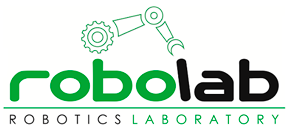[vc_row][vc_column width=»1/1″][vc_column_text]THERAPIST: Un robot autónomo y socialmente interactivo para asistencia en rehabilitación motora y cognitiva[/vc_column_text][vc_column_text]
| Financial entity: | Ministerio de Ciencia e Innovación |
| Principal Investigator: | Bustos García de Catro, Pablo |
| Type: | Aplicada |
| Key reference: | TIN2012-38079-C03-01 |
| Year: | 2012 |
[/vc_column_text][vc_column_text]Neuro-rehabilitation therapy pursuits the recovery of damaged neuronal areas and/or muscles from the repetitive practice of certain motor or cognitive activities. The patient’s recovery directly depends on the adherence to neuro-rehabilitation therapy. Conventional methods consisting of repetitions usually make the patient feel unmotivated and neglect complying with the indicated treatments.
In addition, the treatment of these motor and cognitive deficits requires intensive and extended rehabilitation sessions, that demand sustained dedication and effort by professionals and incur in accretive costs for the institutions. Robotic Science has become in recent years a useful tool to address these issues. One of the most active research fields in this topic is the design of socially assistive robots.
These robots can be used in non-contact therapeutic interactions between the patient and the robot, exploiting embodiment, emotions, dialogues, personality, user models and socially situated-learning. They may provide cost-effective solutions to the need of extended and dedicated one-on-one care, and also to monitor progress during physical therapy and daily life, providing tireless motivation, encouragement and guidance. This project proposes the development of THERAPIST, a robot for neuro-rehabilitation that will perform as an innovative trainer in motor deficit therapies. This implies the design and development of a socially interactive robot, which must be endowed with new cognitive functionalities that will allow it to operate as an autonomous, active assistant. Within the integrated project, the subproject ASSIST will lead the design, construction and validation of the overall architecture of the robot. This task will be divided in three parts that cover the mecatronics, the software framework and the cognitive architecture. Physically, the robot THERAPIST will be the result of a series of improvements over an existing and well proven robot named Ursus II built previously by our group.
The most relevant modification pursuits a substantial increase of the head and arms potential expressivenes by studying natural movements made by working therapists. In a similar spirit, most of the software development will be done over an existing robotics framework named RoboComp, also built by our group in collaboration with the UMA group. This distribute component-oriented framework will be significantly improved after an important planned research effort, that will eventually lead to the independence from the underlying communications middleware. Finally, the most challenging goal of this subproject is the overall design of a new cognitive architecture for THERAPIST, based on the combination of an inner-simulator engine operating on models of the robot itself, the environment and the objects and people in it, a deliberative symbolic planning and learning module and a set of behaviour generating processes.
In order to correctly evaluate the validity of this proposal and the magnitude of its benefits, we will test the therapeutic abilities of THERAPIST in a clinical use case conducted at the Hospital Universitario Virgen del Rocío (Seville): paediatric patients with upper limb motor deficit due to obstetric brachial plexus palsy and cerebral palsy. Both cases are among the most prevalent pathologies causing motor and cognitive deficits. Restricted to well-defined environments, the evolution of the project will be followed from the study of therapeutic sessions of increasing difficulty attending to the autonomy of the robot.
From these pilot experiments, we will iteratively evaluate and improve the functionalities of THERAPIST, following a scheme that will require the active participation of engineers, therapists and patients within the loop, not only as designers or evaluators, but also as interactive partners.[/vc_column_text][/vc_column][/vc_row]

